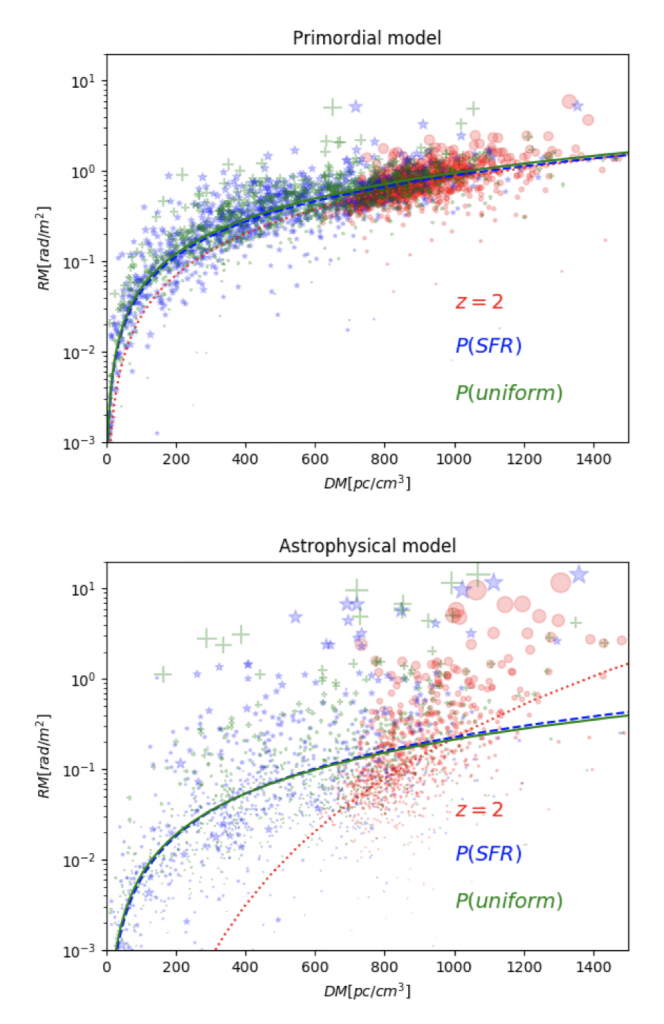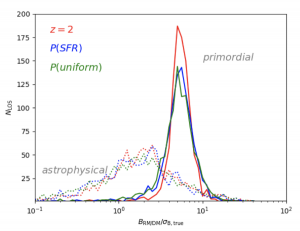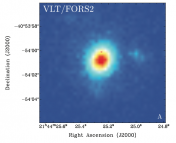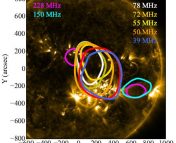Title: Probing the origin of extragalactic magnetic fields with Fast Radio Bursts
Authors: F. Vazza, M. Brüggen , P.M. Hinz, D. Wittor, N. Locatelli, and C. Gheller
First Author’s Institution: Dipartimento di Fisica e Astronomia, Universita ́ di Bologna, Bologna, Italy
Status: Submitted to MNRAS, open access
What do Fast Radio Bursts (FRBs), polarization, and extragalactic magnetic fields on massive scales have in relation to each other? Well to cut to the chase, by combining the polarization of FRB signals we can potentially determine the origin of extragalactic magnetic fields. This could be made possible – in simulation as of now – by some special characteristics of FRBs that wouldn’t necessarily be offered by more steady state radio sources. So welcome to today’s astrobite, where we’ll take some time to learn about how we can uncover the origin story of extragalactic magnetic fields.
Radio Emissions and Magnetic Fields
To understand the results of this paper, we must first define the interactions that allow an FRB detection to carry a signature of the extragalactic magnetic field. There are two distinct interactions presented in this paper for distinguishing between the origin of these magnetic fields, Faraday Rotation Measure (RM) and the Dispersion Measure (DM). RM is strongly affected by the magnetic field and leads to a rotation in the polarization angle as it passes through the field. DM results in the intrinsic FRB signal being shifted to lower frequencies by the time the signal is observed. Both effects are dependent on the free electron density of the intervening intergalactic medium (IGM). FRBs are special probes of these magnetic fields because they are significantly brighter than the typical radio galaxy, which allows the authors to explore down to lower RMs and be sensitive to weaker magnetic fields.
Discriminating Between Origins

Figure 1: Plots of the Rotation Measure (RM) vs Dispersion Measure (DM) of 1000 line-of-sight FRB measurements for the primordial and astrophysical scenarios.
For these extragalactic large scale magnetic fields, the authors separate potential origins into two categories, primordial and astrophysical, where primordial refers to remnant magnetic fields from the very early universe and astrophysical to anything relatively recent (think well into galaxy formation). These two scenarios are considered by beginning with hydrodynamic simulations where a volume of containing baryonic and dark matter is evolved. The primordial scenario begins with a uniform magnetic field of
Gauss and the astrophysical scenario is initialized with a much smaller magnetic field of
Gauss but includes additional radiative simulations which would account for galaxy formation.
To get a more complete understanding of this complex and model dependent analysis, the authors also approach the simulations using a few different models of how FRBs are distributed across redshift. They assume a source of FRBs at a constant redshift (z=2), redshifts related to the Star Formation Rate (SFR), and as uniformly distributed along the line-of-sight. The measured RM vs. DM for 1000 simulated line-of-sight FRBs is shown in Fig. 1 for these three models. From the initial simulations shown here, the authors point out that there is a striking difference between the primordial and astrophysical cases, where for the primordial case DM vs RM measurements are tightly packed around a linear fit, while the astrophysical case has significant scatter. This difference in scattered behavior between the primordial and astrophysical scenarios could lead to identifying the origins of the measured extragalactic magnetic fields but there are some complications.

Figure 2: Distributions of the ratio of measured average extragalactic magnetic fields compared to the actual simulation magnetic fields. Scatter for scenarios is fairly large where the primordial case is generally overestimated.
So how well did they actually do in recovering the extragalactic magnetic fields from the FRB RM and DM measurements? To quantify this, they took the ratio of the measured average magnetic field from the FRB DM and RM values to the actual magnetic fields present in the simulations. The distributions of these ratios can be seen in Fig. 2. A concerning aspect of these distributions that the authors point out is the amount of scatter around their average ratios and that the primordial scenario has an overall tendency to recover an average magnetic field that is a factor of 5 higher than is expected.
It appears that single FRB measurements won’t get us any closer to determining the origins of the large scale average extragalactic magnetic fields, but not all is lost. The authors point out that with many FRB measurements ( > 100) it may be possible to determine between strictly primordial or astrophysical magnetic field origins as the scatter seen in both scenarios had quite some overlap. Therein lies the rub, as usual we need more measurements of what aren’t the easiest to get. That means we have to keep waiting until we can get those FRB catchers online (CHIME, SKA).





Trackbacks/Pingbacks